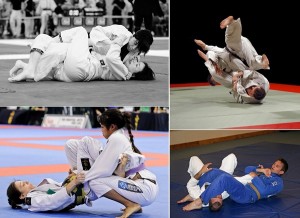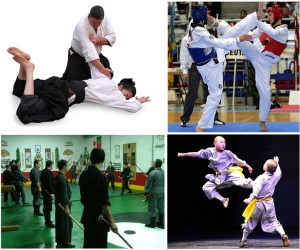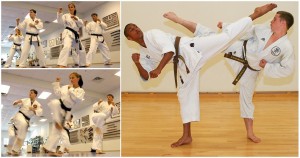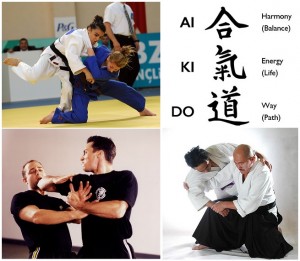10 Most Popular Martial Arts
Martial Arts, as defined by Wikipedia are codified systems and traditions of combat practices, which are practiced for a variety of reason: self-defense, competition, physical health and fitness, as well as mental, physical and spiritual development.
Here are the 10 most popular martial arts known and practiced in the world:
No.1. Muay Thai from Thailand
Thailand’s national sport is commonly mistaken to be the same as kickboxing but they’re not. In Muay Thai, it is legal to strike below the belt, with elbows and knees. This is because Muay Thai uses body parts as the weapon for fighting. This includes the feet, elbows, knees, fists and shins. Many of the elements in Muay Thai have resemblance with Japanese and Indian counterparts making it unclear on when exactly Muay Thai came into existence. What is clear is that it was at the time of King Rama V in 1868 which ushered in the golden age for Muay Thai as the King took a personal interest in the sport. Muay Thai traditionally was very structured and more choreographed style of fighting. It evolved into an art where focus is shifted in using the body as the weapon for fighting.
No.2. Brazilian Jiu-jitsu from Brazil
Bearing the country’s name, Brazilian jiu-jitsu formed from Kodokan Judo ground fighting fundamentals taught by the Japanese jiu-jitsu master Mitsuyo Meda to Carlos Gracie. It eventually came to its own art through adaptations and experimentations from the Judo knowledge of Carlos and Helio Gracie which they passed on to their family. Maeda is considered the toughest man that ever lived. The Gracie family in Brazil is considered today as the first family of jiu-jitsu. Like the traditional jujutsu and judo, the Brazilian version is focused on ground grappling which is commonly used in mixed martial arts competitions.
No.3 Karate from Japan
The Japanese word “karate” means “empty handed” and it is an apt description for this martial art. Karate is a martial art which does not use any weapons. While the early styles are believed to have been existent since the 1300s, the martial arts code, “10 Precepts of Karaoke” was written by the father of modern karate Anko Itosu in 1908. In karate’s weapon-less striking, the legs and hands turn to spears according to Itosu. This martial art is extremely valuable for its health benefits and for self-defense. The precepts states, “… it can be used as a way to avoid a fight if confronted by a villain or ruffian.”
No.4 Kung fu from China
This martial art was introduced in China by Chinese Yellow Emperor Huangdi in 2698 BC during his reign. Kung fu literally means an achievement gained through hard and long work. It is one of the oldest martial arts in the world. To date, there are tens of thousands of forms and versions of Kung fu used all over the world. Shaolin monks who taught kung fu emphasized on virtues such as humility, trust, patience and respect and the importance of philosophy and morality to the kung fu practitioners. Like other martial arts, kung fu is valued for its health benefits and for self-defense.
No.5 Taekwondo from Korea
Taekwondo became popular after World War II as the occupation of Korea by Japan ended. This martial art is defined by its English translation which means “the way of fist and foot” and uses the combination of physical skills and mental strength. This is often illustrated when a taekwondo follower breaks boards with foot or hand. Included in the Olympics event, taekwondo is regarded as the most popular martial art in the world, with 30 million followers in over 100 countries, three million of which are black belts. Stamina, speed, balance, flexibility and physical strength are developed and enhanced by this martial art.
No.6 Ninjutsu from Japan
Introduced to the mainstream through Teenage Mutant Ninja Turtles, this mysterious Japanese martial art is said to have guerilla warriors and assassins as the historic followers. These ninjas used the art of secrecy and covertness to surprise and defeat their opponents. Ninjutsu was developed during Japan’s feudal age with only one intention – to kill. Basic weapons are the hands and feet but ninjas also go for weapons training – throwing stars, spears, swords, staffs and explosives. More useful in the past, Ninjutsu is not particularly taught at present time, although some of its elements are used by other martial arts.
No.7 Jujutsu from Japan
Referred to as the “art of softness”, jujutsu is focused on grappling, rolls, locks and throws. This is the martial art resorted to by disarmed Japanese samurai. Unlike other martial arts, Jujutsu is less structured and more of an “anything-goes” style of defense sport. Gouging, poking and biting are some of the tactics taught to students. These tactics can be fatal if used in combination with other martial arts practices. This is popular in North America as an effective close-quarter combat.
No.8 Krav Maga from Israel
This martial art is considered a violent and rule-free skill. Used by Israeli security forces and the special police, Krav Maga is not used for sport as it emphasizes injurious attacks to the opponent’s vital spots – groin and eyes. This martial art also encourages headbutts and the use of any available object as weapons. The three-step approach to this martial art is used: Deal with the immediate threat; prevent the attacker from mounting a second offensive strike and neutralize the attacker.
No.9 Aikido from Japan
Aikido was developed and created in Japan in the early 1900s. The followers of aikido are taught how to use the strength and energy of the attacker against them. They are taught and trained to disarm their attacker but not seriously injure them. Followers of aikido are also taught defense techniques against staffs, knives and swords. Morihei Ueshiba, aikido’s founder said that in aikido followers can be successful if they are “willing to receive 99% of the attacks of the opponent and stare death in the face.”
No.10 Judo from Japan
This martial art was founded by the Japanese educator Kano Jigoro who because of his childhood experience of being bullied in the 1860s and 1870s decided to take basic skills from other martial arts available at that time. With those skills, Jigoro added his own throws making what is now known as modern-day Judo. “Ju” means “soft method” which in loose translation means using the opponent’s strength against him. Judo’s main focus is on powerful throws and work on the ground more than striking. This also utilizes submission-style attacks such as locks and chokes, valuable for self-defense.
Some of the martial arts listed here should only be practiced and done by professionals and mature people who have concrete understanding of what’s detrimental on one’s life and what’s not. Most martial arts mentioned here were formed due to its founder’s need to protect or defend himself.






